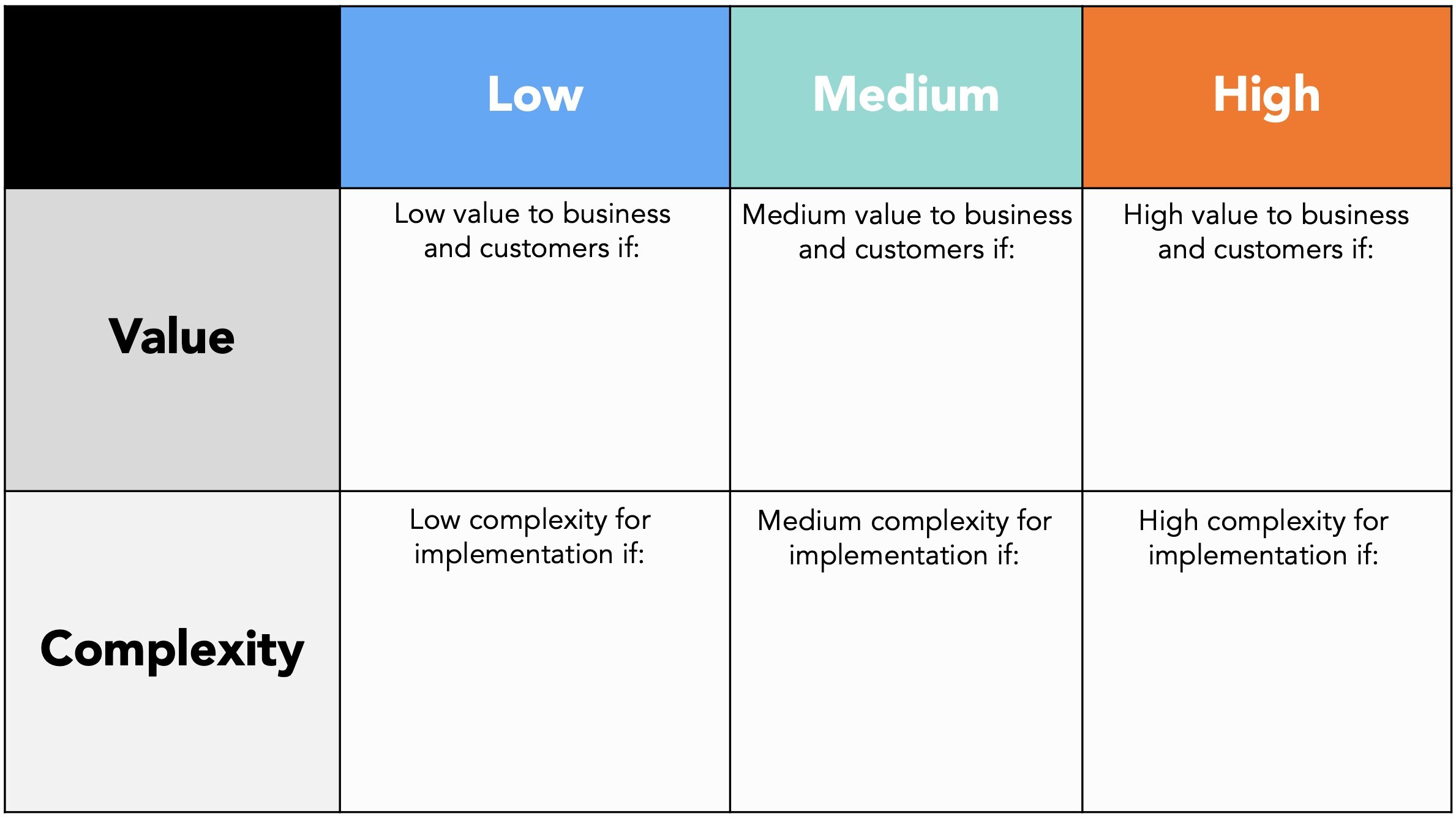Description
The purpose of the Prioritization Criteria Framework is to determine the relative priority of different initiatives based on the goals and capabilities of your organization. The framework is typically used when you have identified several potential initiatives and need to choose what to tackle first. While there are many iterations of this framework, most are based on the concepts of value and complexity. Value refers to what is important to you and your customers. Complexity refers to the level of difficulty or resources required for implementation. This framework forces you and your team to align on what represents value and complexity for your organization. Once the criteria has been finalized, you can begin evaluating different initiatives to determine relative priority.
Questions
The Prioritization Criteria Framework helps to answer marketing questions like:
How can we prioritize the different marketing initiatives that we have identified?
What exactly do we mean when we say that this initiative is valuable or complex?
How do we distinguish between something being low, medium, or high value or complexity?
Steps
To start, make sure you are clear on the scope of what you are planning to prioritize. The criteria that you develop needs to be relevant to the potential initiatives that you have identified.
Determine what value means to your organization. This should be based on the degree to which an initiative contributes to a business goal, and the value or interest that a consumer will place on the initiative.
Assess how you will distinguish between low, medium, and high value. Be quantitative and specific. For example, if a new feature is expected to produce a <1% lift in sales it is low, 1-2% is medium, >2% is high.
Determine what complexity means to your organization. This should be based on the amount of time, resources, dependences, and risk that executing the initiative represents to your organization.
Assess how you will distinguish between low, medium, and high complexity. Again, try and be as specific as possible. Consider all of the relevant people, processes, systems, and resources required to execute.
Finally, stress test your Prioritization Criteria Framework by using it to prioritize a cross-section sample of your initiatives. Does the criteria apply? Are the results useful? If not, return to Step 1.
Considerations
Ensure that you are not creating the criteria to lead to the results you want. No agendas.
The more objectivity and specificity you can apply to the criteria, the more useful it will be.
If Low, Medium, and High is too broad and blunt, try using a scoring system instead (e.g., 1-5).

